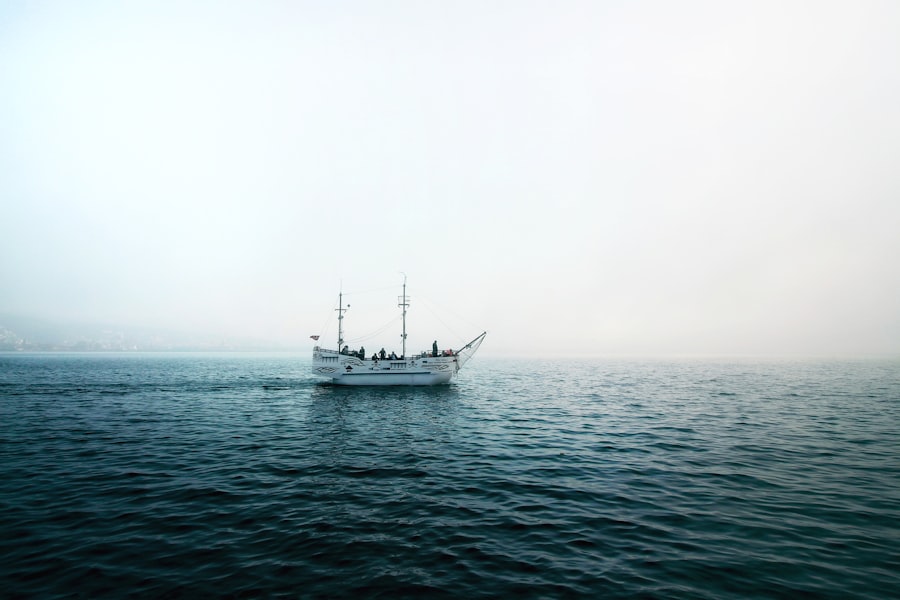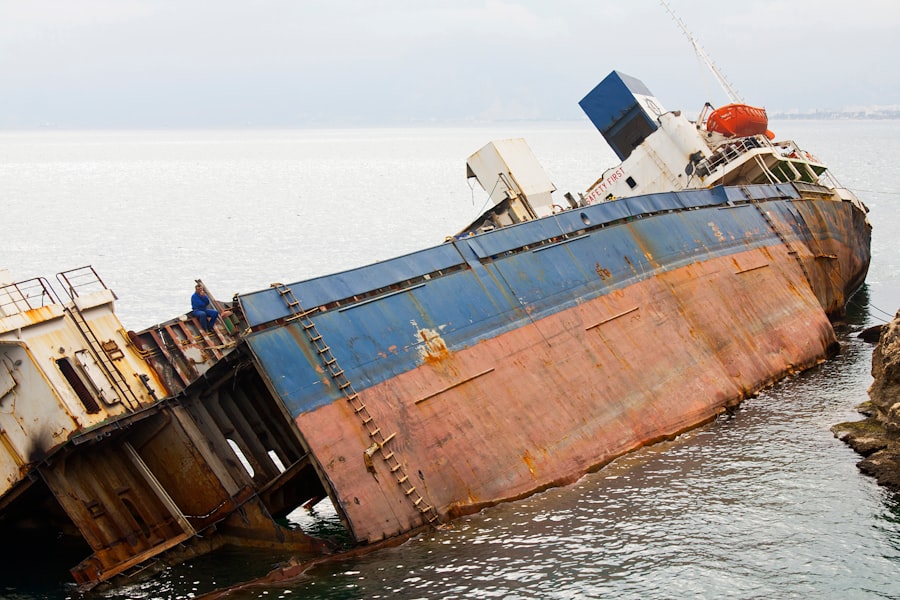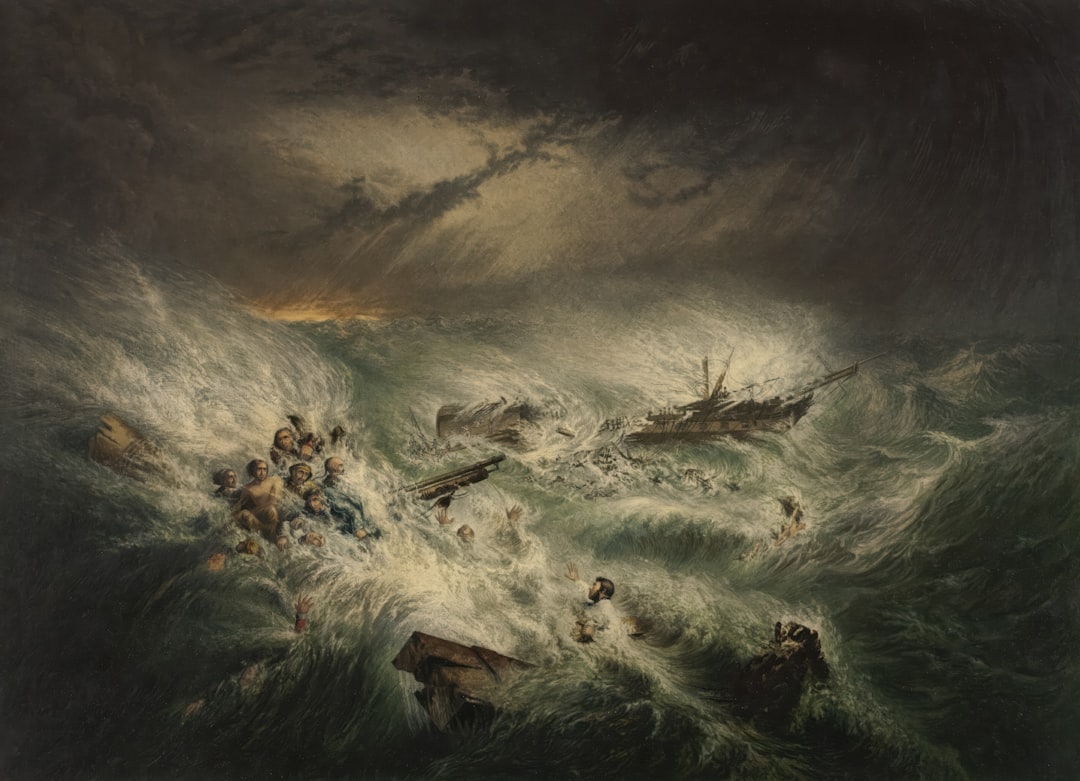The Drake Passage, a body of water located between the southern tip of South America and Antarctica, is renowned for its tumultuous seas and unpredictable weather. Spanning approximately 600 kilometers (370 miles) in width, it serves as a critical maritime route for vessels traveling to and from the Antarctic region. Named after the English explorer Sir Francis Drake, who navigated these waters in the late 16th century, the passage has become synonymous with both adventure and peril.
Its strategic importance cannot be overstated, as it connects the Atlantic and Pacific Oceans, facilitating international trade and scientific exploration. The passage is not only significant for its geographical location but also for its rich marine biodiversity. The cold waters are teeming with life, including various species of whales, seals, and seabirds.
However, the beauty of this remote region is often overshadowed by its reputation for being one of the most dangerous waterways in the world. The combination of strong currents, icebergs, and fierce storms creates a challenging environment for even the most experienced mariners. As such, the Drake Passage has become a focal point for discussions about maritime safety, environmental conservation, and the historical narratives of shipwrecks that have occurred within its depths.
Key Takeaways
- The Drake Passage is a treacherous body of water located between South America’s Cape Horn and the South Shetland Islands of Antarctica.
- Historical shipwrecks in the Drake Passage serve as a reminder of the dangers and challenges faced by sailors navigating this notorious stretch of water.
- The Drake Passage is known for its extreme weather conditions, including strong winds, high waves, and rapidly changing weather patterns, making it one of the most challenging maritime routes in the world.
- Navigating the Drake Passage presents numerous challenges, including icebergs, strong currents, and limited visibility, requiring skilled and experienced sailors to safely traverse the area.
- Famous shipwrecks in the Drake Passage, such as the Endurance and the Lady Elizabeth, have left a lasting impact on the environment, highlighting the need for conservation and protection of the area’s delicate ecosystem.
Historical shipwrecks in the Drake Passage
Throughout history, the Drake Passage has witnessed numerous shipwrecks that tell tales of human ambition and tragedy. The treacherous waters have claimed countless vessels, each with its own story of misfortune. One of the earliest recorded shipwrecks in this region occurred in 1700 when the Spanish galleon San Telmo sank during a violent storm.
The loss of this ship, along with its crew of over 600 men, marked a significant event in maritime history and highlighted the dangers that lay ahead for those who dared to navigate these waters. As time progressed, more ships met their fate in the Drake Passage. The 19th century saw an increase in exploration and whaling activities, leading to a surge in maritime traffic.
Unfortunately, this also resulted in a higher incidence of shipwrecks. The tragic sinking of the whaling ship Essex in 1820 serves as a poignant reminder of the perils faced by sailors during this era. Stranded in icy waters after being attacked by a sperm whale, the crew was forced to endure harrowing conditions as they sought rescue.
Such incidents not only underscore the risks associated with navigating the Drake Passage but also contribute to its rich tapestry of maritime lore.
The treacherous weather conditions of the Drake Passage

The weather conditions in the Drake Passage are notoriously unpredictable and can change rapidly, posing significant challenges for vessels traversing its waters. The convergence of cold Antarctic currents with warmer oceanic currents creates a volatile environment where storms can develop with little warning. Sailors often describe the passage as having “the worst weather on Earth,” with waves that can reach heights of over 30 feet during storms.
This unpredictability is exacerbated by the region’s isolation, which can delay rescue efforts and complicate navigation. In addition to fierce storms, fog and icebergs present further hazards for ships navigating the passage. The presence of icebergs, particularly during the summer months when melting occurs, adds an additional layer of danger.
These massive floating ice formations can be difficult to spot until it is too late, leading to catastrophic collisions. The combination of high winds, rough seas, and ice creates an environment where even well-equipped vessels can find themselves in dire straits. As such, understanding and preparing for these weather conditions is crucial for any expedition attempting to cross this formidable stretch of water.
The challenges of navigating the Drake Passage
| Challenges | Impact |
|---|---|
| Strong Winds | Difficulty in maintaining course |
| High Waves | Risk of ship instability |
| Narrow Passage | Limited room for maneuvering |
| Icebergs | Potential collision hazard |
Navigating the Drake Passage requires not only skill but also an intimate understanding of its unique challenges. Mariners must contend with strong currents that can alter a vessel’s course unexpectedly. The infamous “Drake Shake,” as it is colloquially known, refers to the turbulent waters that can make steering a ship particularly difficult.
This phenomenon is caused by the confluence of various oceanic currents and can create chaotic conditions that test even seasoned sailors. Moreover, the lack of reliable navigational aids in this remote region adds to the complexity of traversing the passage. While modern technology has improved navigation capabilities significantly, there are still areas where GPS signals may falter or become unreliable due to geographical features or atmospheric conditions.
This uncertainty necessitates a high level of preparedness and adaptability from crews who must be ready to respond to changing circumstances at a moment’s notice. The combination of natural obstacles and technological limitations makes navigating the Drake Passage a formidable challenge that requires both experience and resilience.
Famous shipwrecks in the Drake Passage
Among the many shipwrecks that have occurred in the Drake Passage, several stand out due to their historical significance or dramatic circumstances. One such vessel is the SS Bounty, which sank in 1789 after a mutiny led by Fletcher Christian against Captain William Bligh. Although not directly lost in the passage itself, the aftermath saw some crew members attempting to navigate these treacherous waters in search of safety.
Their harrowing journey serves as a testament to human endurance in the face of overwhelming odds. Another notable shipwreck is that of the MV Explorer, which sank in 2007 while carrying tourists on an Antarctic cruise.
Fortunately, all passengers and crew were rescued by nearby ships before disaster struck fully. This incident highlighted not only the dangers inherent in navigating these waters but also raised questions about safety regulations for tourist vessels operating in such perilous environments. The legacy of these famous shipwrecks continues to resonate within maritime history, serving as cautionary tales for future generations.
The impact of shipwrecks on the environment

The environmental impact of shipwrecks in the Drake Passage is a complex issue that warrants careful consideration. When vessels sink, they can release harmful substances into the surrounding waters, including fuel oil and cargo materials that may pose risks to marine life. The delicate ecosystem of the Drake Passage is particularly vulnerable to such pollution events, which can disrupt food chains and harm local wildlife populations.
In addition to immediate pollution concerns, shipwrecks can also lead to long-term ecological changes. For instance, sunken vessels often become artificial reefs over time, attracting various marine species that seek shelter or food among their remains. While this can enhance local biodiversity in some cases, it may also alter existing habitats and introduce new species that could disrupt established ecosystems.
As researchers continue to study these impacts, it becomes increasingly clear that understanding the environmental consequences of shipwrecks is essential for preserving the fragile balance of life within the Drake Passage.
Rescue missions in the Drake Passage
Rescue missions in the Drake Passage are fraught with challenges due to the unpredictable weather and treacherous conditions that characterize this region. When vessels encounter distress situations—whether due to mechanical failure or severe weather—coordinating a rescue operation can be a daunting task. The remoteness of the passage often means that help is not readily available, requiring nearby ships or aircraft to respond quickly to emergencies.
One notable rescue operation occurred in 2010 when a yacht carrying several adventurers capsized during a storm in the Drake Passage. Despite harsh conditions, nearby vessels were able to coordinate a successful rescue effort that saved all crew members from perilous circumstances. Such incidents highlight not only the bravery and skill of rescuers but also underscore the importance of preparedness and communication among vessels operating in these dangerous waters.
As maritime traffic continues to increase in this region due to tourism and research activities, ensuring effective rescue capabilities will remain a critical priority.
Strategies for avoiding shipwrecks in the Drake Passage
To mitigate risks associated with navigating the Drake Passage, mariners have developed various strategies aimed at avoiding shipwrecks. One key approach involves thorough pre-voyage planning that includes detailed weather assessments and route optimization based on current conditions. By utilizing advanced meteorological tools and satellite technology, crews can make informed decisions about when to embark on their journey or whether to alter their course mid-voyage.
Additionally, maintaining vigilant watchkeeping practices onboard is essential for spotting potential hazards such as icebergs or other vessels early enough to take evasive action. Training crew members in emergency response protocols ensures that they are prepared for any situation that may arise during their passage through these treacherous waters. Ultimately, fostering a culture of safety and preparedness among all crew members plays a vital role in reducing the likelihood of accidents and ensuring successful navigation through one of the world’s most challenging maritime environments.
The future of shipping in the Drake Passage
As global shipping continues to evolve, so too does the future of maritime traffic through the Drake Passage. With increasing interest in Antarctic tourism and scientific research expeditions, there is a growing need for sustainable practices that prioritize safety while minimizing environmental impacts. Regulatory bodies are beginning to implement stricter guidelines regarding vessel operations within this sensitive region to ensure that both human activities and marine ecosystems are protected.
Moreover, advancements in technology may play a pivotal role in shaping future shipping practices within the passage. Innovations such as autonomous vessels equipped with sophisticated navigation systems could enhance safety by reducing human error while improving efficiency during transit through challenging waters. As stakeholders work together to address these emerging trends and challenges, it is crucial that they remain committed to preserving both maritime heritage and environmental integrity within this remarkable yet perilous stretch of ocean.
The allure and danger of exploring the Drake Passage
The allure of exploring the Drake Passage lies not only in its breathtaking natural beauty but also in its rich history steeped in adventure and discovery. For many explorers and tourists alike, crossing this iconic waterway represents a rite of passage—a chance to experience firsthand one of nature’s most formidable landscapes. However, this allure is tempered by an inherent danger that demands respect from all who venture into its depths.
The juxtaposition between beauty and peril is what makes exploring the Drake Passage so captivating yet daunting at once. Adventurers are drawn by tales of legendary shipwrecks and daring rescues while simultaneously acknowledging that they are entering an environment where nature reigns supreme. This duality serves as both an invitation and a warning: while there are incredible experiences awaiting those who dare to traverse these waters, they must also be prepared for whatever challenges may arise along their journey.
The enduring legacy of shipwrecks in the Drake Passage
The legacy of shipwrecks in the Drake Passage endures as a testament to human resilience against nature’s formidable forces. Each wreck tells a story—of ambition, tragedy, survival, or discovery—that contributes to our understanding of maritime history and environmental stewardship within this unique region. As explorers continue to navigate these treacherous waters today, they carry with them not only their own aspirations but also echoes from those who came before them.
In reflecting on both past tragedies and ongoing challenges faced by mariners today, it becomes clear that lessons learned from shipwrecks must inform future practices aimed at ensuring safety while preserving ecological integrity within this remarkable stretch of ocean. Ultimately, as humanity seeks to explore new frontiers amidst changing global dynamics, it is imperative that we honor those who have ventured into these perilous waters before us—recognizing their sacrifices while striving towards a more sustainable future for all who dare cross paths with one another amidst nature’s awe-inspiring yet unpredictable embrace.
The Drake Passage, known for its treacherous waters and unpredictable weather, has been the site of numerous shipwrecks throughout history. This perilous stretch of sea, connecting the Atlantic and Pacific Oceans between the southern tip of South America and Antarctica, has claimed many vessels due to its strong currents and frequent storms.
